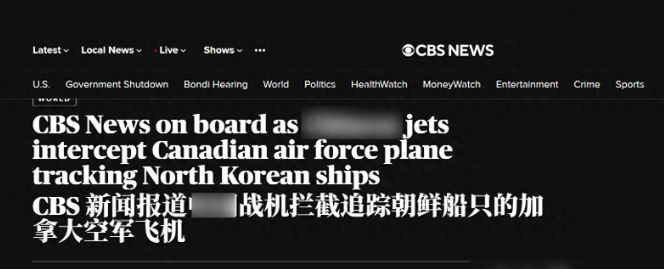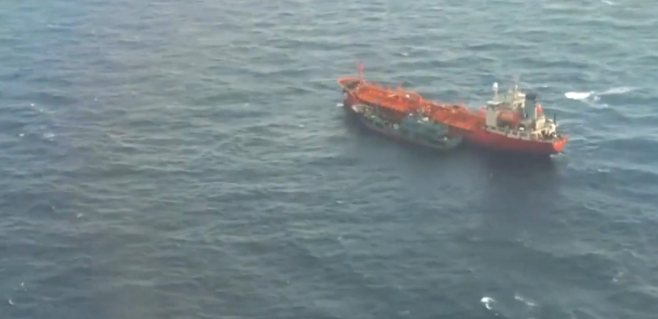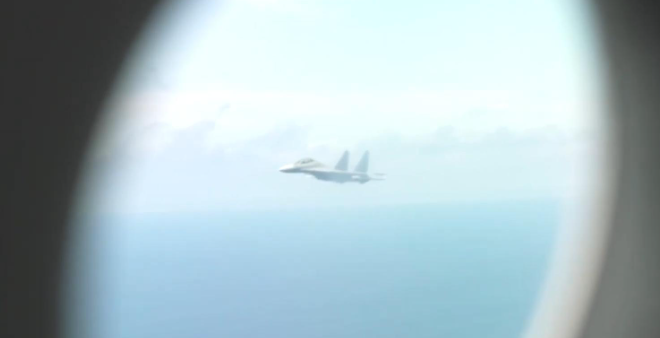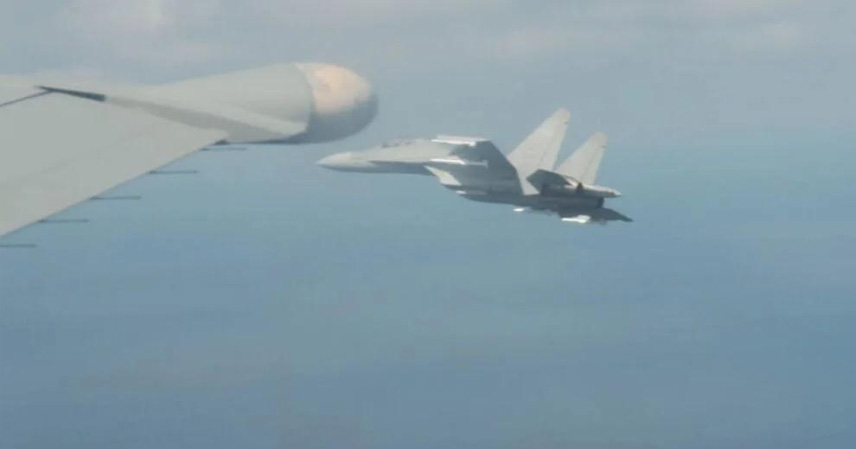Canada, as a U.S. ally, often aligns its military activities with Washington. According to a CBS report on October 7, 2025, Canadian military aircraft were intercepted by Chinese J-16 fighter jets over the East China Sea.
The incident involved a Canadian CP-140 maritime patrol aircraft, which claimed its mission was “tracking North Korean vessels.” However, the underlying purpose was closer reconnaissance of Chinese airspace near its eastern coastline, with the plane entering China’s Air Defense Identification Zone (ADIZ).
The Interception
The Chinese J-16 jets, along with Su-30s, conducted a professional and close-range intercept. Radio warnings were issued first, but the CP-140 ignored them and continued provocative maneuvers. The closest distance recorded was approximately four wingspans (around 60 meters)—a dangerously tight margin where any miscalculation could result in a collision.

Key points of the intercept:
- The J-16 jets were armed with live PL-15 air-to-air missiles, clearly demonstrating their capability and warning the Canadian aircraft.
- The maneuver was a standard “show of force” to deter further provocation.
- According to international law, a nation may intercept, warn, and, if necessary, use force against foreign aircraft that enter its airspace without permission.
The video footage released by Canada, intended to criticize China, actually highlighted the professionalism of Chinese air intercepts, as the J-16 jets executed precise maneuvers while maintaining safety.
Canada’s Pattern of Provocation
This was not the first time Canadian aircraft have approached Chinese airspace under the guise of “North Korea surveillance missions.” Such flights serve more as political signaling rather than genuine enforcement actions, especially as international sanctions on North Korea have had limited effectiveness.

China has repeatedly issued warnings and conducted intercepts. The Chinese side emphasizes that provocation near its airspace will not be tolerated.
Strategic Context
Canada’s repeated operations near China illustrate:
- A lack of strategic autonomy; many actions are aligned with U.S. policy objectives.
- Symbolic rather than practical military impact; Canada’s military capacity cannot project true power in the region independently.
- China’s military readiness and assertiveness; any intrusion into Chinese ADIZ is met with decisive response.

As China strengthens its defense capabilities, its ability to protect national sovereignty has become increasingly robust. The message is clear: provocation near Chinese territory carries real risks, and diplomatic or media maneuvers will not deter a strong, prepared military.
Canadian reconnaissance in the East China Sea serves more as a political statement for Washington than a direct threat to China. While Canada presents itself as a global actor, its actions primarily support U.S. strategic goals and serve as minor provocations. China, confident in its military strength, continues to intercept foreign aircraft safely but firmly, demonstrating both capability and restraint.



